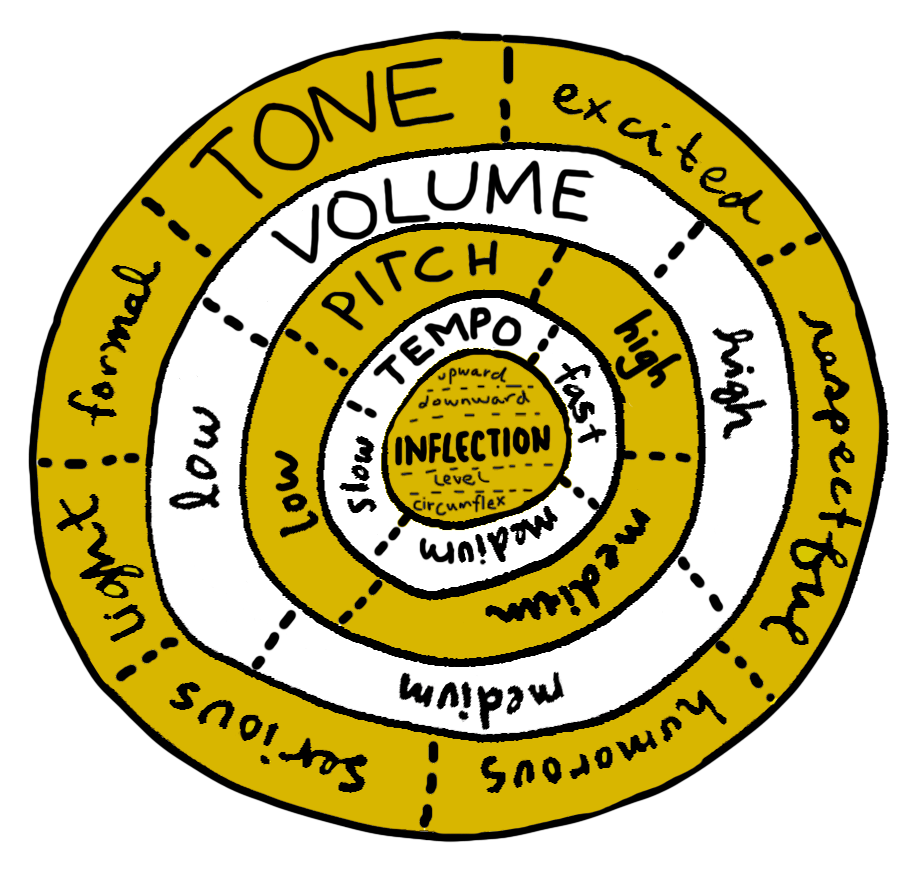The Actor’s Overview: Harnessing the Power of Your Voice in Public Speaking

Entrepreneurs, small business owners, and business leaders can learn valuable lessons from the world of theater. Effective communication is the backbone of any successful business, and mastering the art of vocal communication can give you a significant edge. In this blog post, we will explore the transferable skills from theater arts to help you improve your public speaking and overall communication skills. So, let’s dive in and discover how you can captivate your audience with the power of your voice…with Theater Thinking!
The Science Behind the Actor’s Voice
The human voice is a powerful tool for conveying emotions and information. Research by Krauss and Morsella (2007) highlights the importance of nonverbal cues, such as tone, pitch, and volume, in communication, emphasizing that these elements play a crucial role in conveying meaning and emotions [1]. As an entrepreneur or business leader, mastering these vocal elements is essential for effective communication.
8 Essential Tips to Enhance Your Vocal Communication
Apply these theater-inspired tips to your business communication:
- Rate: Speak at a moderate pace to ensure comprehension. Speaking too quickly can lead to poor retention and understanding [2].
- Projection: Use your diaphragm to speak loudly and clearly, enhancing your presence and commanding attention during meetings or presentations.
- Clarity: Enunciate your words and use proper sentence structure to avoid confusion. Practice enunciation in front of a mirror to refine your technique.
- Expression: Vary your vocal intonation to add emphasis and emotion, helping your listeners accurately identify the emotions you want to convey [3].
- Pitch: Utilize the full range of your voice to keep your audience engaged and avoid monotony.
- Stance: Maintain good posture while speaking, with knees slightly bent and weight evenly distributed between your feet.
- Eye contact: Engage your audience by making eye contact at least 50% of the time, improving trust and rapport [4].
- Poise: Project confidence and maintain composure, even when mistakes occur, to command respect and maintain credibility.

Section 3: Implementing Theater Thinking in Your Business Communication
Here’s how to apply theater thinking to your daily business communication:
- Rehearse: Practice speeches or presentations beforehand to build confidence and familiarity with the content.
- Warm-up: Perform vocal exercises and stretches to prepare your voice for speaking.
- Record yourself: Use a voice recorder or smartphone app to capture your speech and evaluate your performance. Identify areas for improvement and make adjustments.
- Seek feedback: Ask trusted friends, colleagues, or mentors to provide constructive feedback on your vocal communication.
- Attend workshops or courses: Participate in public speaking, acting, or voice coaching classes to develop and hone your skills.
By applying Theater Thinking to your business communication, you can unlock the power of your voice and captivate your audience, whether in meetings, presentations, or casual conversations. Mastering these skills will help you excel as an entrepreneur or business leader. Remember, effective vocal communication is not just for actors; it’s a skill that everyone can benefit from. So, go forth and conquer the business world with your newfound vocal prowess!
Sources:
[1] Krauss, R. M., & Morsella, E. (2007). The social psychology of language: The role of nonverbal elements in communication. In K. Fiedler (Ed.), Social communication (pp. 161-190). New York: Psychology Press.
[2] Bricker, P. D., & Pruzinsky, T. (1966). Effects of speech rate on personality attributions and competency evaluations. Journal of Counseling Psychology, 13(6), 545-549.
[3] Scherer, K. R. (2003). Vocal communication of emotion: A review of research paradigms. Speech Communication, 40(1-2), 227-256.
[4] Argyle, M., & Cook, M. (1976). Gaze and mutual gaze. Cambridge University Press.